Sitting in the Vilcabamba mountain range of Peru, perched high above the Vilcanota River, is a sacred place. They call it Machu Picchu. Viewed from above, Machu Picchu looks like a great bird – like a condor – turning in full flight. Up close, it is a key to a past life. Machu Picchu’s story is set in the carefully considered placement of stone.
Disclosure: This post contains affiliate links. If you buy something from one of our affiliates, we receive a small commission at no extra charge to you. Thanks for helping to keep our blog up and running!
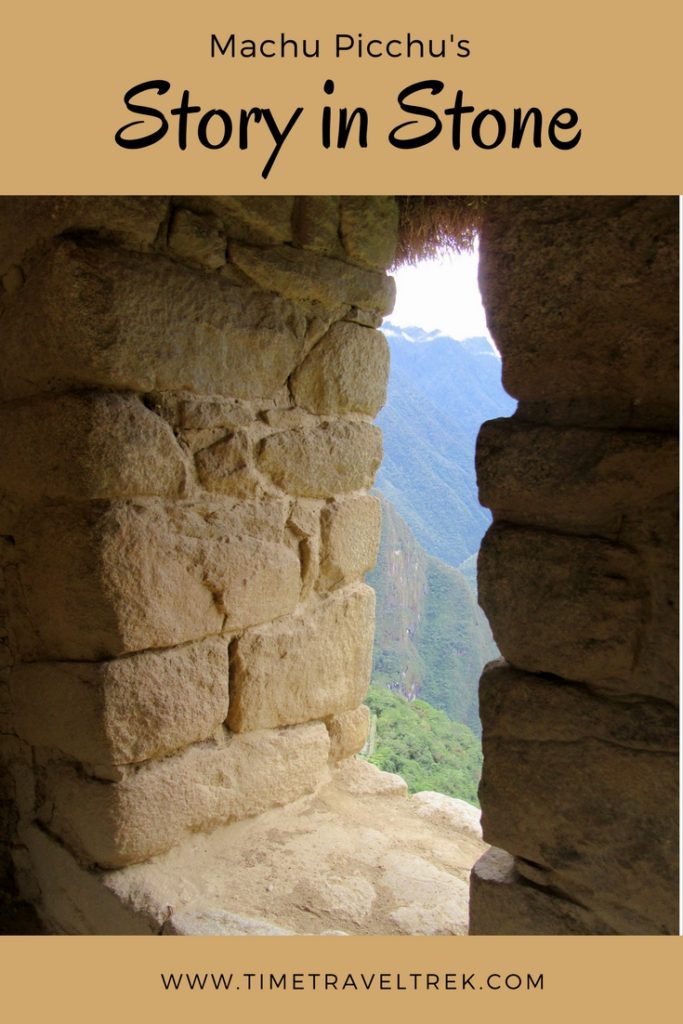
Table of Contents
Machu Picchu’s Story: What’s In a Name?
The original name of Machu Picchu is unknown. Archaeologist and explorer Dr. Hiram Bingham gave the city its current name in 1911. It is the same name of the mountain that rises above it. Machu means “old” in the Quechua language. Picchu means “mountain” or “peak.”
To the south, Machu Picchu’s namesake old mountain itself towers at a height of 3,050 meters (10,004 feet). Waynapicchu (young peak) rises 2,750 m (8,965 ft) to the north. Machu Picchu’s buildings and terraces sprawl out on the col between the two peaks, sitting at around 2,400 m (7,824 ft) above sea level.
Hiking to Machu Picchu? We did… bad fish and all!
Read the full story here.
Building a Monument
According to archaeologists, the site’s story began building during the reign of Inca Pachakuteq in 1438. From this time, it took another 30 years to complete the initial phases of construction. An exclusive group of priests and priestesses and important members of the Inca government lived here.
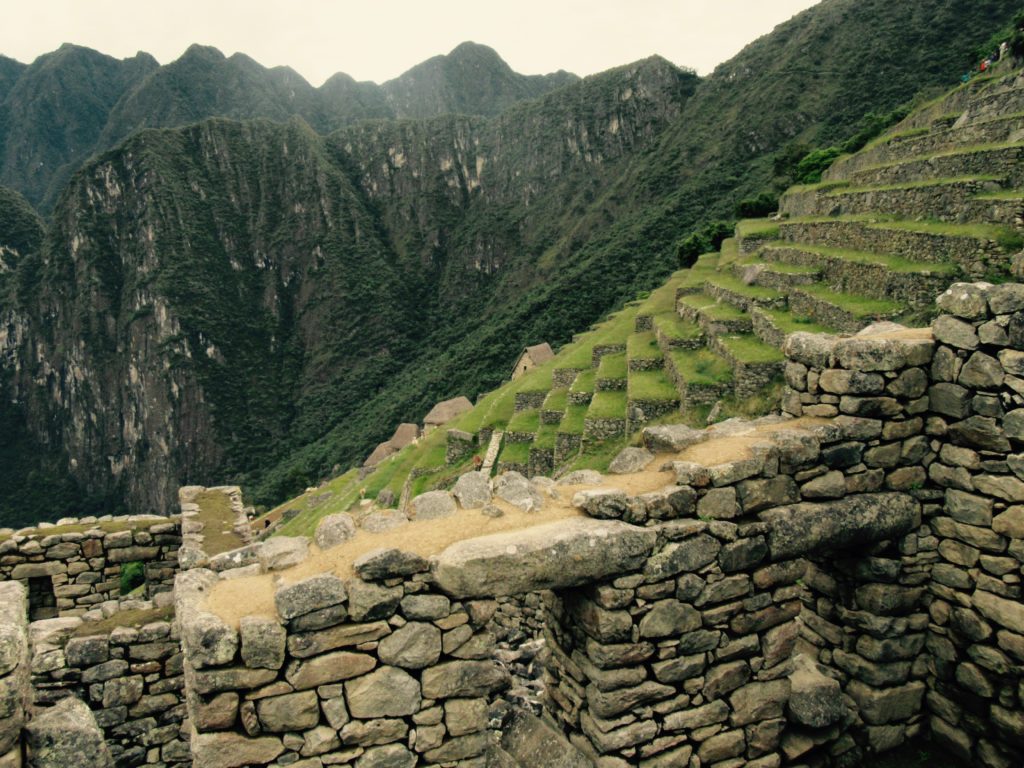
This archaeological wonder comes in two sections: agricultural and urban. The agricultural section contains more than 100 terraces. Terraces cover over half of the built area within the site. Experts estimate that the terraces were capable of producing nearly 9,000 kilograms (19,840 pounds) of corn each year. In the urban section of this archaeological masterpiece, you’ll finds the main temples, residences and storehouses.
A stony enclave, Machu Picchu became an educational center for future leaders until 1537 when war broke out. As a result of the conflict, Machu Picchu was slowly and systematically abandoned over the next eight years. It soon became a distant memory, its presence known only to locals.
The Story of Rediscovery & Restoration
In 1895, the Peruvian government restores the old Inca trail from Ollantaytambo to Quillabamba (passing below Machu Picchu, alongside the Vilcanota river). By 1907, two local families move into Machu Picchu and farm the terraces.
During 1911, Dr. Hiram Bingham (Yale University) sees Machu Picchu for the first time. National Geographic and Yale University lead an expedition to open tombs in 1912 and as a result uncover buildings, photograph buildings and complete topographical research. A third expedition by Bingham 1914 explores trails leading to Macchu Picchu.
Machu Picchu is left alone from 1914 to early 1934. In 1934, the Spanish government and Patronato de Arqueologia (archaeological sponsorship) take over, start to remove growth and begin restoration. Machu Picchu becomes a National Archaeolgical Park in 1941.
Construction on a road to connect the archaeological site from the begins in 1946. Machu Picchu’s road is open in 1948 and because of this a tourist hotel is built near ruins. In 1981, the Peruvian government declares Machu Picchu a Historical Sanctuary.
The site becomes a UNESCO Cultural World Heritage site in 1983.
Hidden Stories Seen Today
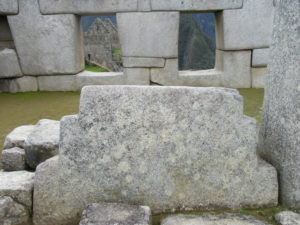
Dig a little deeper, look a little closer and Machu Picchu’s story starts to emerge. For instance, the Sacred Plaza includes the Main Temple, the Temple of Three Windows and the Priest’s House. In front of the Temple of the Three Windows there is half of an Incan cross.
Why only half of a cross? Because the trio of open windows face west. When the sun come in the windows, the light hits the cross and the shadow that is cast completes the cross.
Circumstance? While it may seem like it, this was a result of careful consideration and planning.
Paying Attention to Detail
Compare and contrast the granite stones used in the buildings. As a result, you’ll quickly notice a range of quality. A finer grade of stone was used to build royal residences and temples and rougher stone was used on other buildings.
Stone placement is also precise. Primitive stonework can be found in the terraces, storehouses and other less important buildings. Read the stones, learn a little more of Machu Picchu’s story.
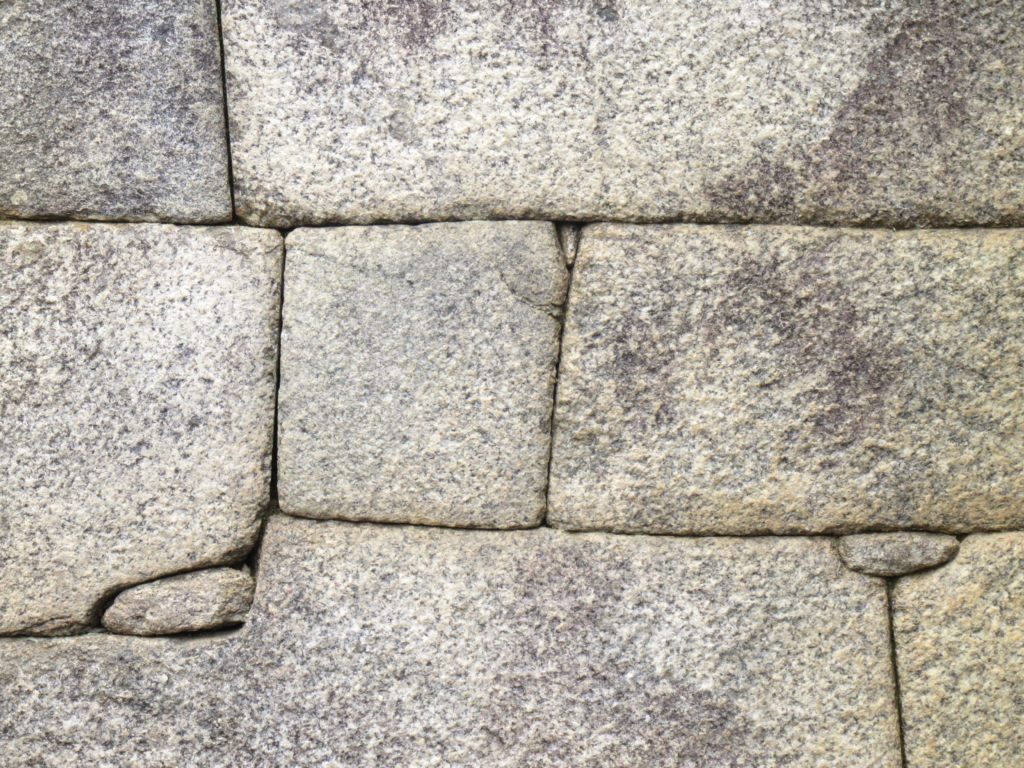
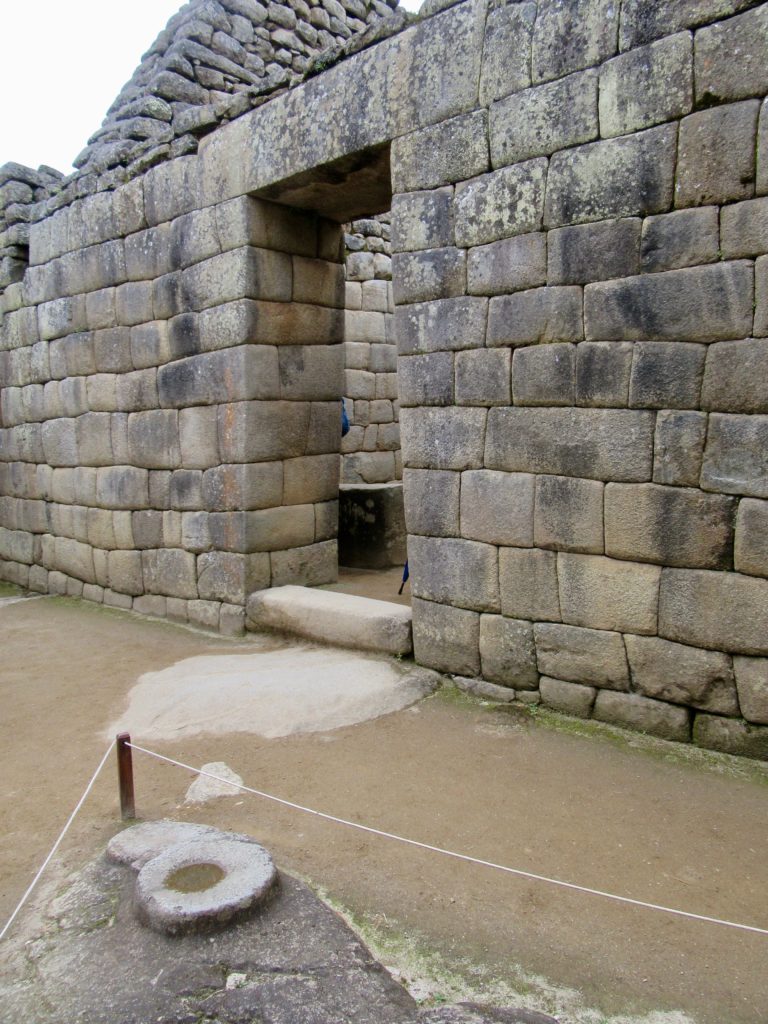
Look at the doorways. Some entrances have a double-jamb doorway. This means that it the entrance to a sacred place, such as the priest’s quarters and areas used for ceremonies.
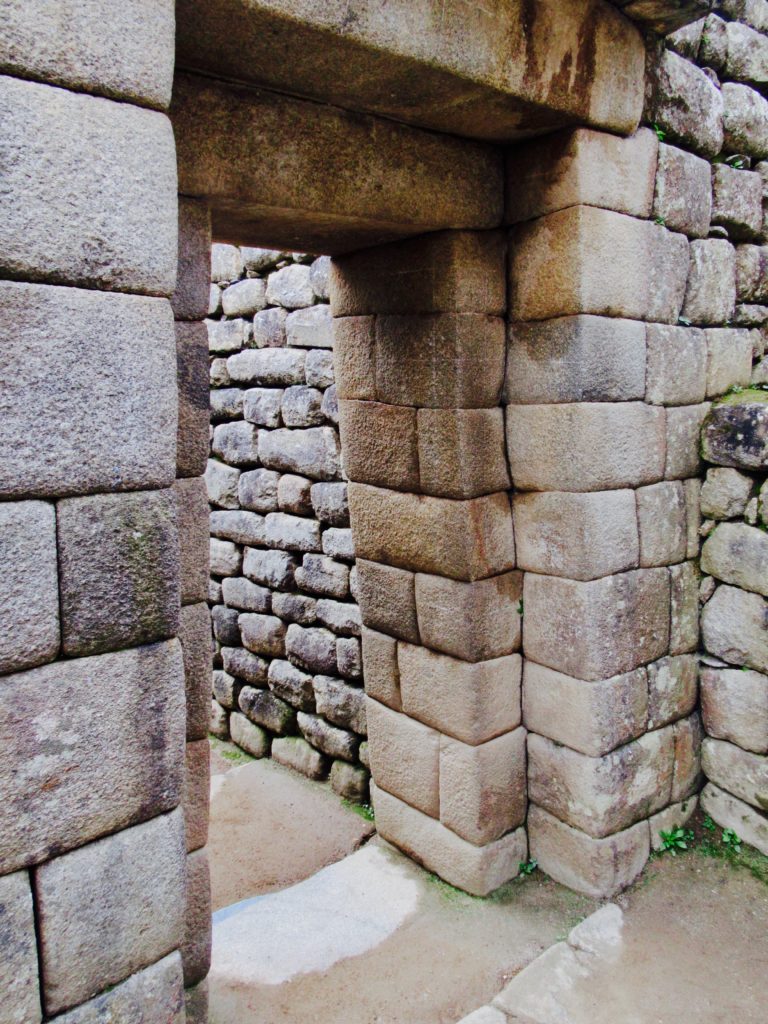
Many doorways are quite tall – there is a reason. Inca rulers were carried everywhere. Because of this, extra height was needed to facilitate movement of the Inca.
Entrance doors are almost always trapezoidal in shape. They look cool, but there is more to it. Earthquakes are common in the region. Trapezoidal shapes are strong and they resist movement. Therefore, they are more earthquake-proof.
Now, check out the roofs. Cylindrical stones are stacked in the gables. Decorative? No, they have a purpose. These stones are used to tie down wooden roof beams to keep the roof from blowing off in strong winds.

Machu Picchu’s Story of Random Stones
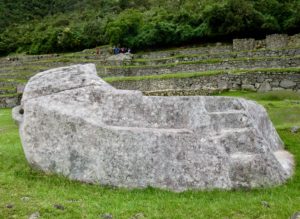
Funeral Rock lies next to the Guardhouse. It is a granite block delicately carved into an altar. The altar was used for funeral rituals, sacrifices, healings and offerings to Pachamama, also known as Mother Earth. Most people see the large funeral rock, few see the smaller stones.
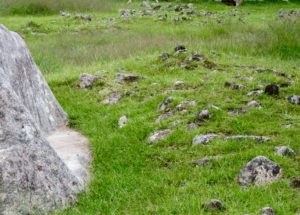
Apacheta is a collection of medium-sized volcanic, limestone, sandstone, and other stones not native to the area. They are now found littered around the funeral rock. It is thought that these stones were brought by pilgrims as offerings during Inca times. When a pilgrim crosses a mountain pass (abra) or visits a sacred place for the first time, they carry a stone to make an offering to gain protection from mountain spirits.
Each stone in Machu Picchu holds a story – a story of purpose, a story of vision, a story of belief. Therefore, it’s safe to say that Machu Picchu’s story is written in stone.
What stories did you uncover in your visit to this storied place?
Planning to Go?
Read more about the Historic Sanctuary at Machu Picchu on the UNESCO WHC website.
Great resources we used on our trip included Lonely Planet Peru and DK Eyewitness Travel Guide Peru.





Leave a Reply